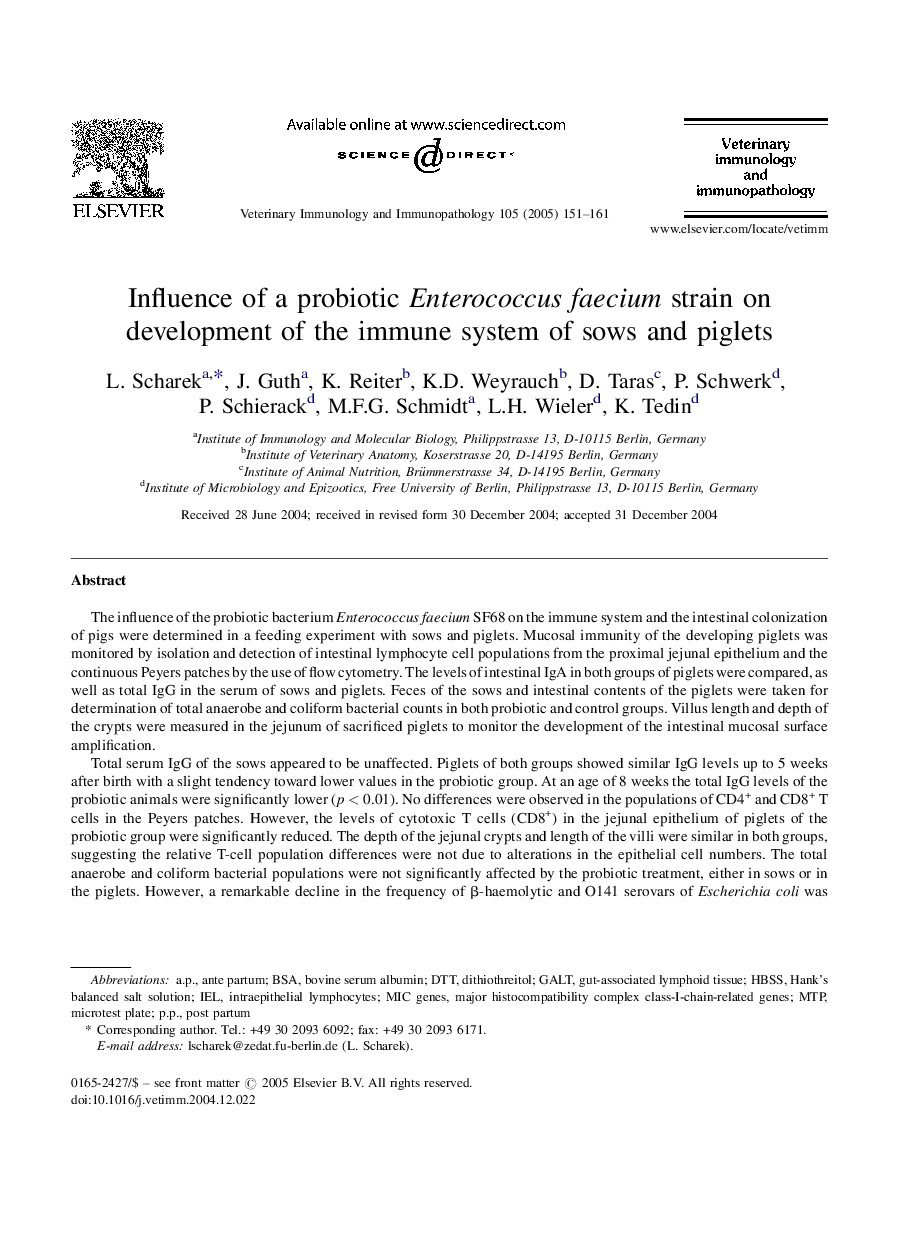| Article ID | Journal | Published Year | Pages | File Type |
|---|---|---|---|---|
| 8987892 | Veterinary Immunology and Immunopathology | 2005 | 11 Pages |
Abstract
Total serum IgG of the sows appeared to be unaffected. Piglets of both groups showed similar IgG levels up to 5 weeks after birth with a slight tendency toward lower values in the probiotic group. At an age of 8 weeks the total IgG levels of the probiotic animals were significantly lower (p < 0.01). No differences were observed in the populations of CD4+ and CD8+ T cells in the Peyers patches. However, the levels of cytotoxic T cells (CD8+) in the jejunal epithelium of piglets of the probiotic group were significantly reduced. The depth of the jejunal crypts and length of the villi were similar in both groups, suggesting the relative T-cell population differences were not due to alterations in the epithelial cell numbers. The total anaerobe and coliform bacterial populations were not significantly affected by the probiotic treatment, either in sows or in the piglets. However, a remarkable decline in the frequency of β-haemolytic and O141 serovars of Escherichia coli was observed in the intestinal contents of probiotic piglets, suggesting an explanation for the reduction in cytotoxic T-cell populations.
Keywords
Related Topics
Life Sciences
Agricultural and Biological Sciences
Animal Science and Zoology
Authors
L. Scharek, J. Guth, K. Reiter, K.D. Weyrauch, D. Taras, P. Schwerk, P. Schierack, M.F.G. Schmidt, L.H. Wieler, K. Tedin,
